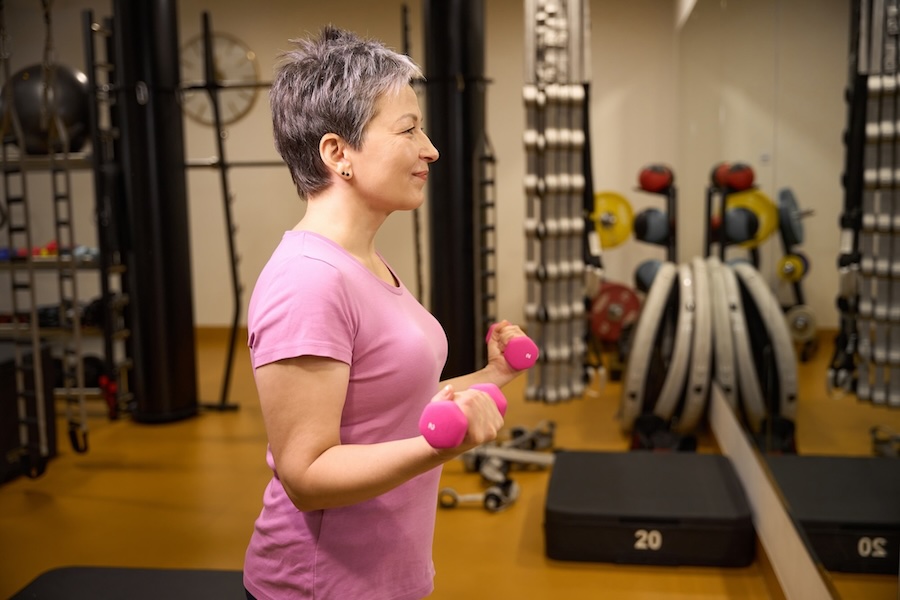Fitness for Survivorship
Mindful Movement: A Path to Healing and Resilience
In an age defined by constant motion and relentless demands, the concept of "mindful movement" emerges not as a fleeting wellness trend, but as a profound and scientifically supported approach to healing and resilience. Beyond the gym's thrum and the race against the clock, mindful movement, encompassing practices like yoga, tai chi, and guided stretching, offers a sanctuary where the physical and emotional converge, fostering a deeper connection to oneself and a more robust recovery from life's trials.
The notion that movement is inherently emotional is gaining increasing traction among researchers and medical professionals. Our bodies, far from being mere vessels, are repositories of experience, holding both the physical aches of exertion and the subtle tensions of stress and trauma. Mindful exercise, by its very nature, addresses this intricate interplay. It encourages a gentle, deliberate engagement with the body, allowing individuals to regulate their nervous systems, diminish the corrosive effects of stress hormones, and bolster immune function.
The Science
The efficacy of mindful movement is not merely anecdotal; it is increasingly substantiated by rigorous scientific inquiry. Studies have illuminated the tangible benefits of these practices, particularly for those navigating the arduous journey of survivorship.
- Yoga's Calming Embrace: Research published in the Journal of Clinical Oncology in 2021 revealed that yoga significantly reduces anxiety and sleep disturbances in cancer survivors, with improvements ranging from 30% to a remarkable 50%. This profound impact underscores yoga's capacity to restore a sense of calm and normalcy amidst profound upheaval.
- Tai Chi's Harmonious Flow: The National Cancer Institute highlights tai chi's ability to enhance balance, flexibility, and overall quality of life. This ancient practice, with its slow, flowing movements, offers a gentle yet powerful means of rebuilding physical strength and fostering mental equanimity.
- The Power of Breath: At the core of mindful movement lies the breath—a fundamental yet often overlooked tool for well-being. Deep breathing exercises have been shown to lower cortisol levels, the body's primary stress hormone, and actively support immune cell activity, thereby contributing to a more resilient and responsive physiological state.
Why It Resonates: Rebuilding Trust and Cultivating Calm
The period following intensive medical treatment or significant life stressors can leave the body feeling estranged, burdened by both physical discomfort and emotional residue. Mindful movement provides a crucial pathway for gentle re-connection. It is an invitation to rebuild trust in one's body, to listen to its subtle cues, and to rediscover a sense of agency and control. Through the rhythmic movements and conscious breathing, a profound sense of calm can be cultivated, offering a much-needed respite from the anxieties and uncertainties of recovery.
A Simple Path to Renewal
Integrating mindful movement into daily life doesn't require hours of dedicated practice or specialized equipment. Even a few minutes can yield significant benefits. Consider this simple routine:
- Grounding Breath: Sit or stand tall, allowing your posture to be both relaxed and alert. Take three deep, cleansing breaths, inhaling slowly through your nose and exhaling fully through your mouth.
- Shoulder Release: Gently roll your shoulders forward in a circular motion, then reverse the direction, rolling them backward. Repeat this movement slowly, noticing any tension that begins to dissipate.
- Overhead Stretch: Extend your arms overhead, reaching towards the sky as if stretching for a new dawn. Hold this position for ten seconds, feeling the gentle elongation of your spine and the expansion of your chest.
- Daily Reset: Repeat this sequence twice daily—once in the morning to set a calm intention for the day, and once in the evening to release the day's accumulated stresses.
As the adage goes, "Mindful movement reminds us that healing isn't a race—it's a rhythm." In a world that often demands speed and efficiency, the deliberate pace of mindful movement offers a radical alternative: a path to healing that honors the body's innate wisdom and the mind's profound capacity for peace. It is a testament to the enduring power of gentle attention, a quiet revolution in how we approach well-being, one breath and one movement at a time.








